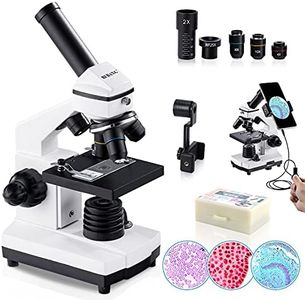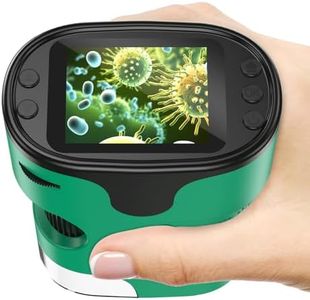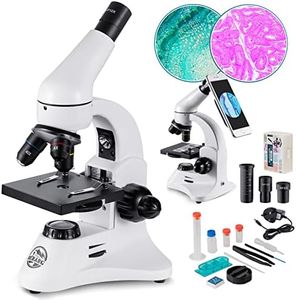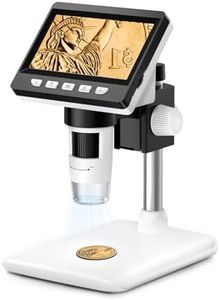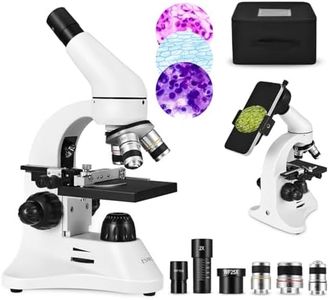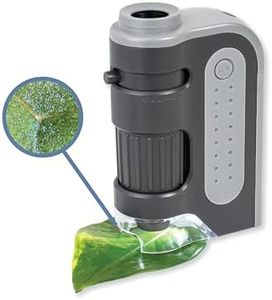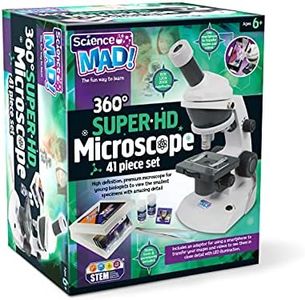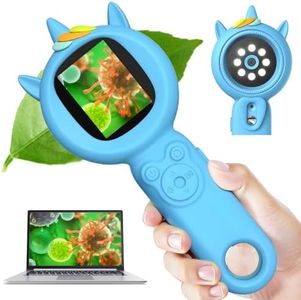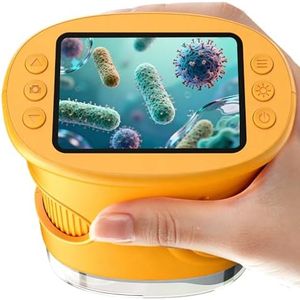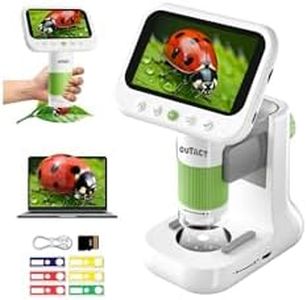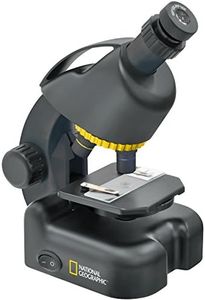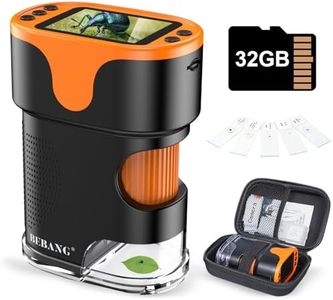We Use CookiesWe use cookies to enhance the security, performance,
functionality and for analytical and promotional activities. By continuing to browse this site you
are agreeing to our privacy policy
10 Best Microscopes For Kids
From leading brands and best sellers available on the web.Buying Guide for the Best Microscopes For Kids
Choosing a microscope for kids can be an exciting journey into the world of science and discovery. The right microscope can spark curiosity and foster a love for learning. When selecting a microscope for children, it's important to consider factors that will make the experience enjoyable and educational. Look for features that are easy to use, durable, and appropriate for the child's age and level of interest. Understanding the key specifications will help you make an informed decision that aligns with the child's needs and interests.MagnificationMagnification is the process of enlarging the appearance of an object. In microscopes, this is a crucial feature as it determines how much detail you can see. For kids, a microscope with a magnification range of 40x to 400x is usually sufficient. Lower magnification (40x-100x) is great for viewing larger specimens like leaves or insects, while higher magnification (200x-400x) is better for smaller details like cells. Consider the child's age and interest level; younger children may benefit from lower magnification to start, while older kids might enjoy exploring higher magnifications.
Type of MicroscopeThere are different types of microscopes, such as compound and stereo microscopes. Compound microscopes are used for viewing small, thin specimens like slides of cells, and they typically offer higher magnification. Stereo microscopes, on the other hand, provide a 3D view and are ideal for larger, solid objects like rocks or insects. For kids, a stereo microscope might be more engaging as it allows them to explore a variety of objects in a more interactive way. Choose based on what the child is most interested in observing.
Ease of UseEase of use is important to ensure that the child can operate the microscope independently and without frustration. Look for features like simple focusing mechanisms, intuitive controls, and clear instructions. Some microscopes come with pre-prepared slides, which can be a great way to get started. Consider the child's age and dexterity; younger children will benefit from a microscope that is straightforward and easy to handle.
DurabilityDurability is a key factor when choosing a microscope for kids, as it needs to withstand regular use and potential mishandling. Look for microscopes made from sturdy materials like metal or high-quality plastic. Some models are specifically designed to be more robust for younger users. Consider the environment in which the microscope will be used and choose one that can handle the expected wear and tear.
LightingLighting is essential for viewing specimens clearly. Microscopes typically use either LED or mirror lighting. LED lighting is more common and provides consistent illumination, which is easier for kids to use. Some microscopes offer adjustable lighting, which can be helpful for viewing different types of specimens. Consider where the microscope will be used; if it's in a well-lit area, lighting may be less of a concern, but in dimmer settings, good lighting is crucial.
